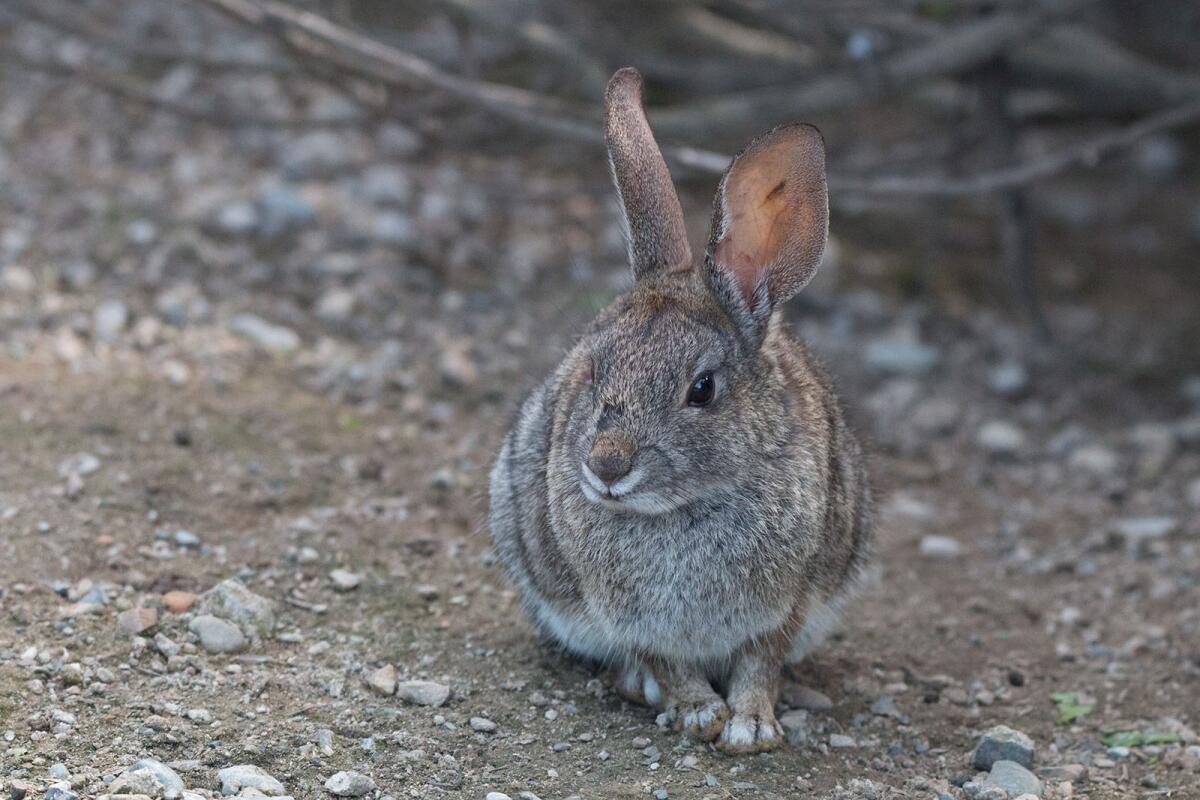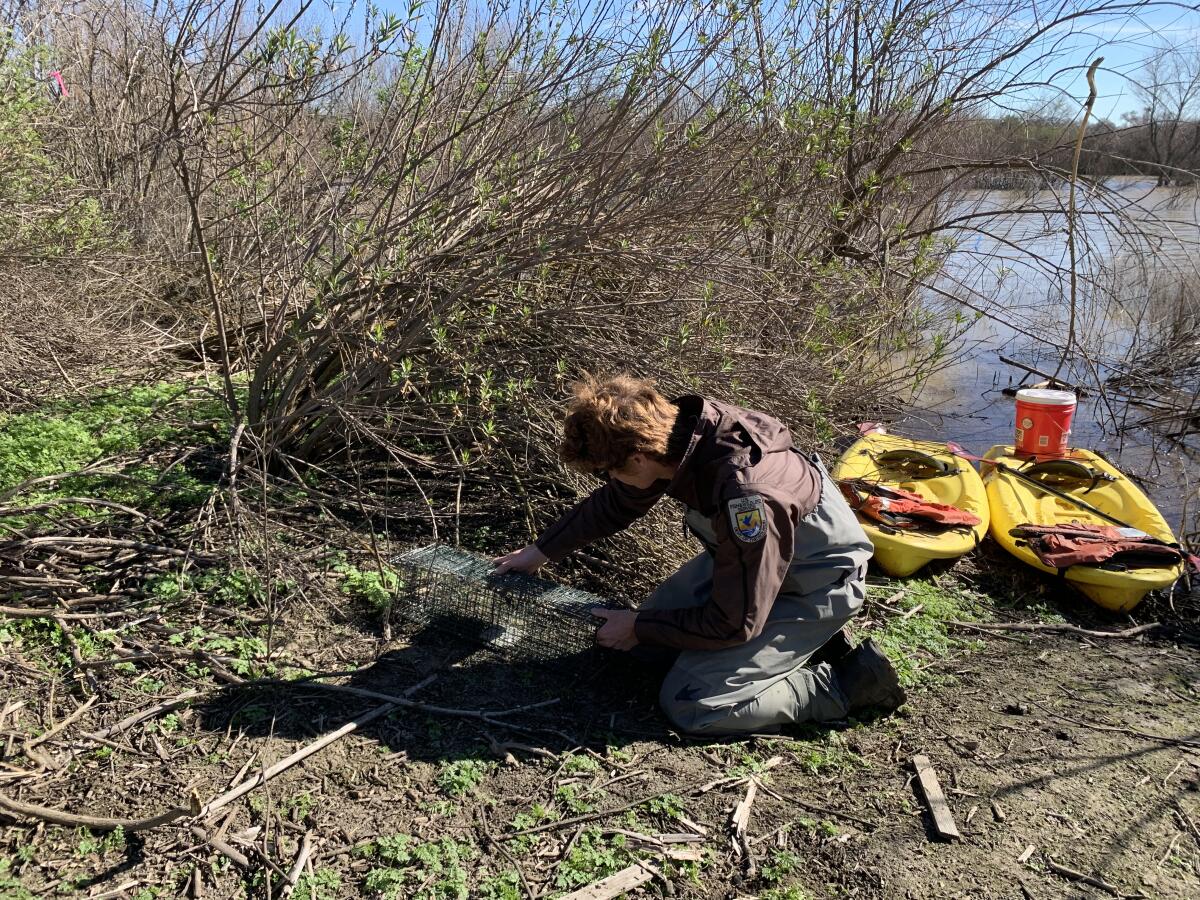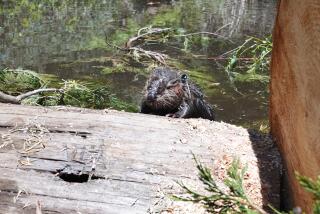A rabbit rescue operation is launched to save bunnies from rising floodwaters

- Share via
With record-breaking storms wreaking havoc throughout the state, even rabbits need rescuing.
For months, a team from the U.S. Fish and Wildlife Service has navigated the Central Valley looking to rescue from rising floodwaters stranded riparian brush rabbits, a small, brown and white creature listed as an endangered species.
Using canoes and motorboats, the five team members have trekked out in rivers from sunrise to past sundown in the San Joaquin River National Wildlife Refuge to rescue rabbits. Some are stranded on high ground, on bush branches or trees. They are then taken to higher ground as the river water level floods the region.
During operations in January and March, 286 rabbits have been rescued, said Fumika Takahashi, wildlife biologist at the San Luis National Wildlife Refuge Complex, which includes the San Joaquin River National Wildlife Refuge.
More operations are planned for next week.
“These rabbits are resilient, they bounce back, but each one you rescue becomes important,” she said.
The rescue effort comes couple of months after the state endured one of the wettest winters in years.
According to Fish and Wildlife Service, the riparian rabbit was believed to be found only in Caswell Memorial State Park and near Lathrop. But with dangerously low numbers, the species was reintroduced into the San Joaquin River National Wildlife Refuge, about 75 miles northeast of San Jose.
“Riparian brush rabbits are especially vulnerable to floods because they live at the edges of rivers,” refuge manager Eric Hopson said in a statement. “They only live in a small area and there aren’t many of them, so events like this can have a big impact on their population and recovery.”

Living near rivers, the animals have evolved to be able to survive floods, Takahashi said, but not for extended periods of time as they’ve had to do so this year.
“They’re actually really good at climbing on vegetation and can even swim short distances,” she said. “But when we have these large floods, there’s very little high ground for them to escape to.”
Animals in the area have seen the San Joaquin River flood in the past, most recently in 2017. But climate change and the current landscape, with growing farms in the area, have meant the rabbit can no longer flee upland. Levees around the river have cut off the escape path for rabbits, and the flooding has directly affected their habitat.
Because of this, officials created what are known as “bunny mounds,” or areas of high land in flood-prone areas where the animals can escape to during flood events. But these areas are also limited in food and can sometimes leave the rabbits exposed to predators.
In January, 37 of the rabbits were rescued from the mounds. In March, 110 were found in the mounds.
The rescues this year have been especially significant for the endangered rabbits, considering the refuge estimates there are only 2,000 to 3,000 rabbits in the area, said Takahashi.
Biologists have worked to trap the rabbits and move them closer to drier land, at least four to five feet higher than the flood area.
But they have had to be careful that their rescue efforts don’t exacerbate a growing problem among the population. Since May 2022, veterinarians confirmed the riparian brush rabbits have been facing rabbit hemorrhagic disease virus 2, a highly contagious and deadly disease that has spread quickly in the western United States.
To curb its spread, officials have vaccinated all of the rescued rabbits. But officials are also concerned that having more rabbits in a smaller area could advance the spread of the disease.
Changing the ecosystem of the environment, moving the rabbits and increasing the concentration of their population could also mean other problems that haven’t yet been spotted, said Erin Hagen, director of restoration science for River Partners, a nonprofit group that has worked with the refuge on the rescues.
Officials are also concerned that climate change will leave the area more prone to flooding.
“Although they’re in a safe elevation, we’re not sure it’s threaded the needle on being on the other side and being completely safe,” Hagen said.
More to Read
Sign up for Essential California
The most important California stories and recommendations in your inbox every morning.
You may occasionally receive promotional content from the Los Angeles Times.











